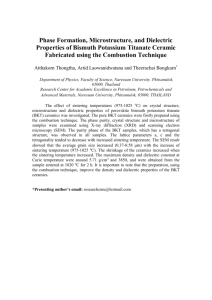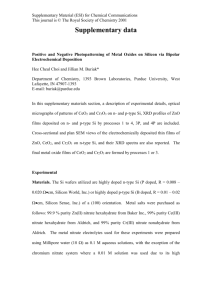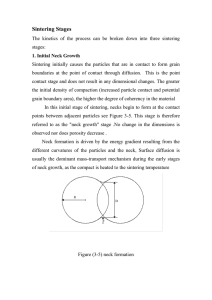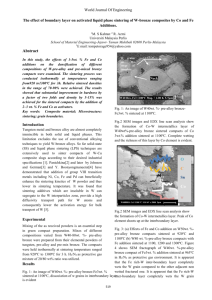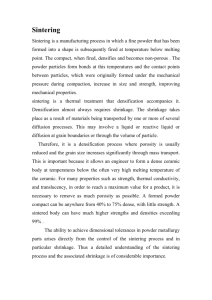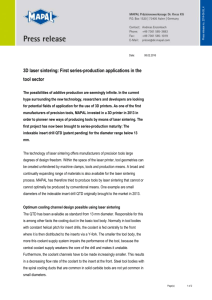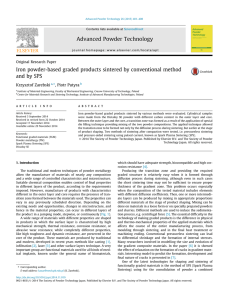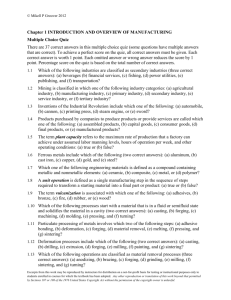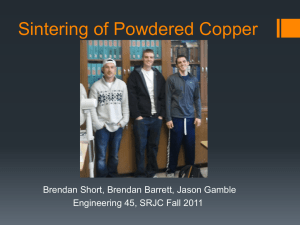Effect of Spark Plasma Sintering Conditions on the In
advertisement
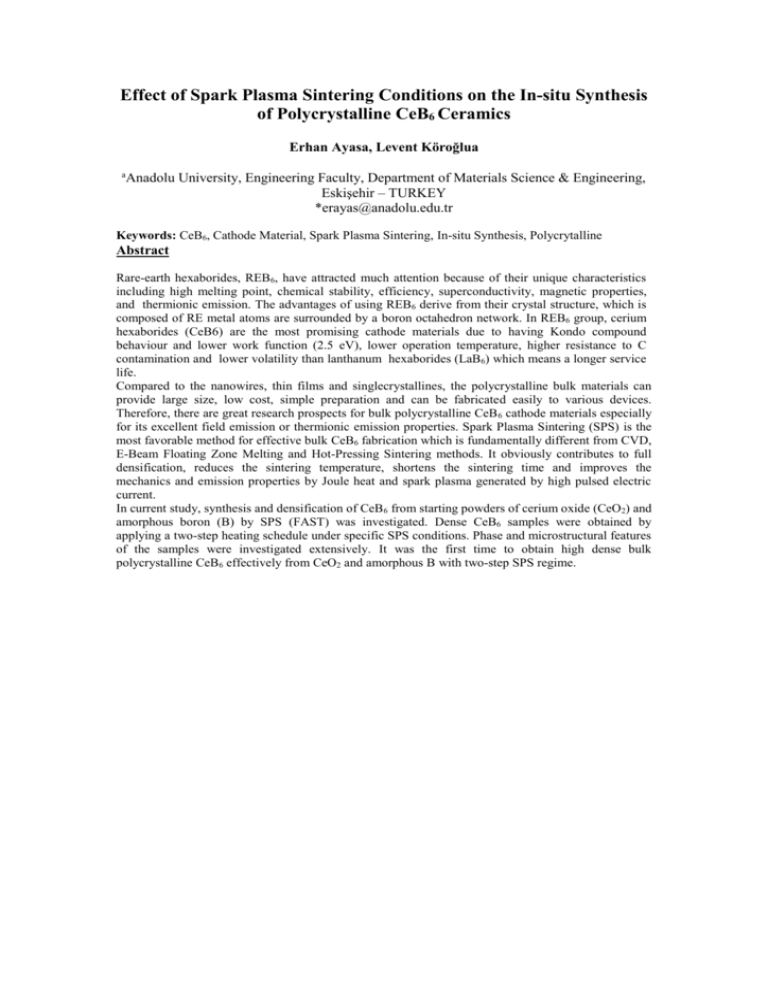
Effect of Spark Plasma Sintering Conditions on the In-situ Synthesis of Polycrystalline CeB6 Ceramics Erhan Ayasa, Levent Köroğlua a Anadolu University, Engineering Faculty, Department of Materials Science & Engineering, Eskişehir – TURKEY *erayas@anadolu.edu.tr Keywords: CeB6, Cathode Material, Spark Plasma Sintering, In-situ Synthesis, Polycrytalline Abstract Rare-earth hexaborides, REB6, have attracted much attention because of their unique characteristics including high melting point, chemical stability, efficiency, superconductivity, magnetic properties, and thermionic emission. The advantages of using REB6 derive from their crystal structure, which is composed of RE metal atoms are surrounded by a boron octahedron network. In REB6 group, cerium hexaborides (CeB6) are the most promising cathode materials due to having Kondo compound behaviour and lower work function (2.5 eV), lower operation temperature, higher resistance to C contamination and lower volatility than lanthanum hexaborides (LaB6) which means a longer service life. Compared to the nanowires, thin films and singlecrystallines, the polycrystalline bulk materials can provide large size, low cost, simple preparation and can be fabricated easily to various devices. Therefore, there are great research prospects for bulk polycrystalline CeB 6 cathode materials especially for its excellent field emission or thermionic emission properties. Spark Plasma Sintering (SPS) is the most favorable method for effective bulk CeB6 fabrication which is fundamentally different from CVD, E-Beam Floating Zone Melting and Hot-Pressing Sintering methods. It obviously contributes to full densification, reduces the sintering temperature, shortens the sintering time and improves the mechanics and emission properties by Joule heat and spark plasma generated by high pulsed electric current. In current study, synthesis and densification of CeB 6 from starting powders of cerium oxide (CeO2) and amorphous boron (B) by SPS (FAST) was investigated. Dense CeB6 samples were obtained by applying a two-step heating schedule under specific SPS conditions. Phase and microstructural features of the samples were investigated extensively. It was the first time to obtain high dense bulk polycrystalline CeB6 effectively from CeO2 and amorphous B with two-step SPS regime.
